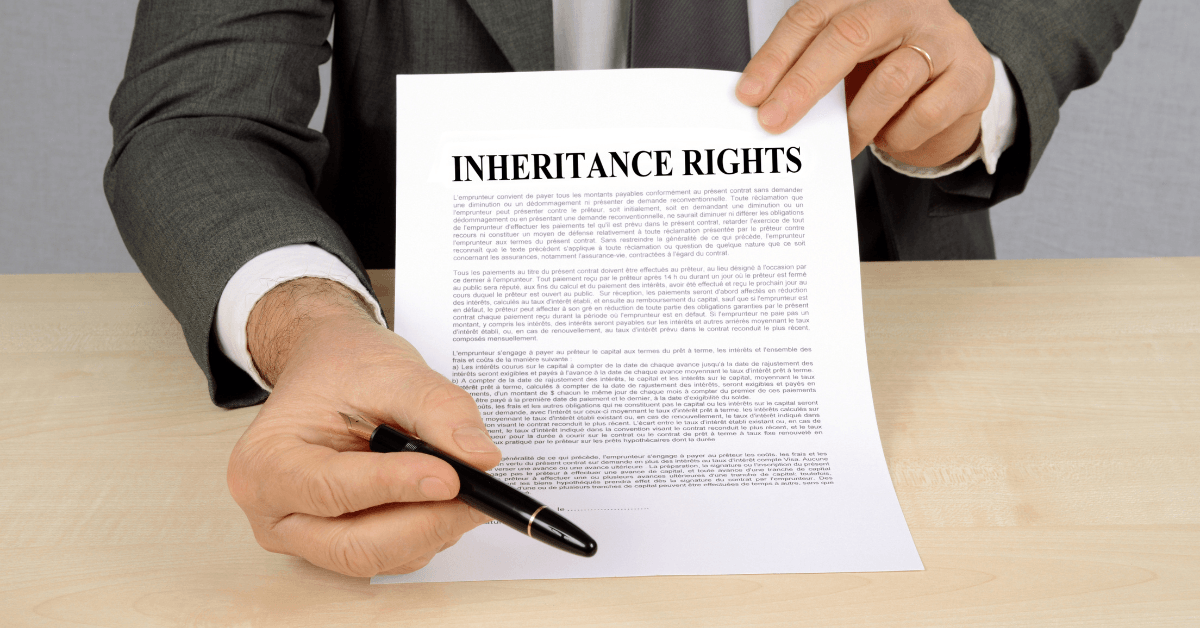Everything you need to know about Trusts
Everything you need to know about Trusts
Trusts are an invaluable tool you must consider for running a business and estate planning. They aim to provide financial protection, tax benefits, and long-term support to your loved ones.

However, Trusts have a complex legal structure that makes them difficult to understand. Learning about Trust entities and what they offer can be a little intimidating, but it is the first step in protecting personal assets and estate planning and this guide will help you understand the concept in depth.
Please continue to read to learn about the basis of a Trust, its advantages and disadvantages, and the procedure to set up a Trust.
A Trust is simply an agreement in which one party (known as the trustee) chooses a second party (the trustee) for the job of handling money or assets for a third party (the beneficiary). For example, your grandparents could give their property or money to your father, who passes it to you. A trust allows you to bind this agreement legally, so it complies with the vision of your grandparents.
Trusts make it easier for you to manage your assets by placing them in the hands of a trustee, to pass it onto a specified beneficiary. People use also use trusts to minimise the tax on their assets or income and allow their loved ones to access the assets when they pass away.
So basically, a trust is a legal entity capable of holding assets on behalf of someone. A trust consists of three main parties. These three parties are described below.
The Settlor:
The person behind creating the trust is the settlor, grantor, or trust maker. A Settlor donates their property, money, or anything of value as collateral. The Settlor’s job is also to decide the distribution of the assets and create the terms and conditions for the contract.
The Beneficiary: The person who you want to inherit your assets is your beneficiary. The beneficiary gets access to the trust’s assets but not outright ownership because, generally, there are rules attached to a trust. For example, a beneficiary might get to live in a home owned by the trust but not have the right to put it on lease or sell it. Beneficiaries are given the assets of the trust according to the contract and certain triggers set by the settlor. A common trigger is age- for instance, assets get inherited when the beneficiary turns 21.
The Trustee: The entity that looks over the money and fulfils the responsibilities set by the settlor is the trustee. The trustee does not get to own the trust’s property but rather be in charge of the distribution to the beneficiaries. Their job is to make sure that demands set by the settlor are being followed.
A Settlor can also choose to act as a trustee. This usually happens when parents set up trust funds for their children. There can also be multiple trustees or a financial institution (companies dedicated to overseeing the distribution of a trust). The settlor also compensates a Trustee for managing the minor child.
How does a Trust Work?
Estate planning involves determining how an individual's assets will be controlled and distributed among the beneficiaries after they die. This can include bank accounts, real estate, life insurance, artwork, and other valuable assets and even a single debt. Trusts are a popular entity that can make all this planning easier for you. Unlike a company, a Trust is a relationship and not a legal entity.
A trust is established whenever there is a separation of legal ownership from the beneficial or real ownership of an asset. An obligation is imposed upon a person (the trustee) to hold trust property or income for a particular person, or for the benefit of others (beneficiaries).
Placing money or any other assets in a trust allows you to pass it to someone in a systemized way, where you get to set the rules. For example, you can include a “spendthrift clause” in a trust fund so that the assets stay away from any creditors if they want to pursue either the grantor or beneficiary for any unpaid debts.
This means that even if the beneficiary gambles all their personal money and incurs a huge debt, their creditors will not use the trust fund assets. This way, your beneficiary will still have some backup funds to recover from any loss.
Advantages of a Trust
We will be looking at some of the common reasons people choose to create trust funds.
- Trusts allow you to create a contract that stays private between you and the beneficiary. The difference between a will and a trust fund is that the will becomes public after the grantor’s death.
- You can designate your assets directly to the person you want to inherit your property. If you have gotten remarried, then a trust can help you make sure your children will get access to your assets and not your spouse's children.
- Protect your Beneficiaries: if your children are minors and lack the financial situation and skills to manage their property, then you can create a trust so that someone else gets the responsibility to look after the assets on their behalf.
- Asset Protection: Many people use trusts to protect their assets. Once you put money into a trust, it becomes difficult for any third party other than the beneficiary to access your assets.
- It allows you to limit how old your beneficiary needs to be to receive the assets. In most cases, the legal age for any beneficiary to acquire the trust’s assets is 18. However, you can also choose not to grant the access until your beneficiary reaches the age of 21, 27, or whatever.
- It also lets you specify how you want the assets to be used. You will get the option to stipulate that money can only be used for education purposes.
- The trust’s payouts can be set to be released in intervals. This will prevent your beneficiary from blowing all the funds assets at once.
- Trust funds also let you minimise the real estate taxes so you can offer all your cash to your future generations.
Disadvantages of a Trust
Let us now discuss some of the disadvantages of a Trust.
- Once created, trusts tend to favour your heirs inheriting your assets.
- Handling the administration of a trust can be a little more complicated than just transferring funds to the beneficiary after the grantor passes away. For example, the trustee may be required to make regular distributions to the beneficiary and record some milestones.
- The cost of setting up a trust is also a reason why people choose not to create them.
- A trust is not a substitute for estate planning but rather it is an estate planning tool that helps you in the distribution of your assets.
- Another disadvantage of a trust is that you must pay taxes on any income generated through its investments.
Different Types of Trust
There are many different types of Trust; depending upon your aim or the kind of assets you are trying to protect, some of them will specifically suit your needs better than the others. Let us now understand each one of these types in detail.
- Discretionary trust
In a Discretionary trust, one or more beneficiaries can be added. Still, the grantor is given complete discretion as to when and how many funds go to the beneficiaries.
The amount of assets that beneficiaries of a Discretionary trust receive is not fixed; even the beneficiaries are also not fixed. The Grantor has the power to set up the terms and time frames as broad or as limited as needed. For example, the settlor can set the distributions of income only for health care needs once the beneficiary turns 21, or the distributions for health care and educational needs can be made at any age.
It is a type of trust that aims to provide the settlor with the best flexibility and controls. This means protecting assets from the beneficiary's poor money-management skills, extravagant spending issues, or divorcing spouse.
Another good thing about incorporating discretionary trust into your estate plan is that it can help you to minimise the estate tax as the trust assets can be passed down to multiple generations, from your children to your grandchildren. (This is called “generation-skipping planning”). Additionally, it allows the trustee to dictate who will inherit the money left in the beneficiary’s trust when the beneficiary passes away; the trust assets can be kept in the family.
- Unit Trust
A Unit investment trust (UIT) is an older form of investment that has become quite unpopular over the last few decades. However, it still has some features that might appeal to investors. UITs share many similarities to mutual funds and exchange-traded funds as they are a tree of investments that pool multiple branches (investors) together.
In simple words, UITs are a type of legal trust that is not set up to transfer assets to a person or a cause but instead act as an investment tool. For example, in a UTI d, many investors open a single trust to purchase stock shares, bonds, and other securities.
There is a fund manager in every unit trust that overlooks the investment and divides the trust into different asset classes to reduce the risk. The unit trust is then divided into parts in accordance with the investors’ respective units held in the trust. Investors then hope to make more money as the unit’s value increases over time.
Investors can exit the fund by selling their units at the bid price to profit. The bid price needs to be higher than they initially paid for the unit(s). The main advantage of Unit trusts is that they help you to spread your money across different investments; Diversifying investments reduces the risk of loss.
- Hybrid Trusts
As the name suggests, a hybrid trust is generally a hybrid form of a discretionary and unit trust. Hybrid is a generic term used for a trust that shares similar elements from the previously mentioned trust types. This type of trust is quite appealing as it includes both advantages of both and offers a useful structure.
Hybrid trusts allow the rights and requirements of both the beneficiaries and grantor to be respected while still providing a flexible income and capital distribution between all the parties.
People choose to open this trust because of the income tax, asset protection, and capital gains tax attached to a hybrid trust. All this becomes relevant when there are more than two parties involved. For example, two separate families plan to buy a commercial property together.
The cost of creating a Hybrid trust is usually higher than setting up a unit or discretionary trust. Still, they offer more flexibility with tax planning and benefits that can be passed down to beneficiaries without any change in the ownership of the investment.
There are also revocable trusts whereby provisions and rules can be altered by the grantor. Similarly, the grantor cannot modify assets or terms without the beneficiary’s permission in an irrevocable truss.
Setting up a Trust
To set up a Trust, the logical first step is to identify the type of trust that suits your requirements the best. Of course, each of the mentioned types of trust has different set-up procedures and requirements. However, some of the common elements of a trust are discussed below.
1. Declaring assets
You will first have to create a list of the assets with their value that you want to include within your trust.
2. Appointing trustee
The next step is to hire an individual or multiple people you trust to overlook your assets. You can also choose to hire a management company with the legal process and authority to look over the distribution of your assets. We at
KMB Legal provide you with skilled professionals that can help through effective solutions on your personal or business matters while shrinking the costs.
3. Determine the beneficiaries
The settlor will now have to create a list of beneficiaries who will receive the access and benefits of the trust. At this step, the settlor also decides the percentage of each beneficiary's assets.
4. Outline Terms
Lastly, the settlor has to focus on the trust deed composition. It is the legal document that helps the trustees set up and manage the rules and conditions of the trust.
How to Operate a Trust
Trusts are managed by individual trustees, trust departments of banks, and other financial institutions. Their responsibilities include disposition of funds, collection of income, distribution to beneficiaries, and replacement of assets.
The management of a trust includes record-keeping, reporting, and tax compliance. The individual or bank that manages all this for the trust’s grantor usually charges some fee. In addition to this fee, they can also charge expenses for financial and investment advisors, accountants, lawyers, brokers, property managers, and other professionals required in the trust.
Some firms allow individuals to establish trust fund accounts online with low-cost trust services. However, if you need a substantial trust with varied assets, you will have to incur significant costs for its formation and operations. This is why it is essential to consider the costs and find the best arrangements to save you on maintenance fees.
FAQ
Lastly, let us answer some of the most frequently asked questions about Trusts.
How do Trusts payout?
The grantor decides the payout of trusts while setting up the trust fund. The trust can pay a lump sum when the time period ends, or incremental payments can be made throughout the years. The grantor gets to choose distributions and payout terms of the trust however they want it to be.
How Trusts Get Taxed?
Different types of trusts are taxed differently, depending upon various factors. For example, the beneficiaries are charged a tax deduction from their income distributed to them. So, in this case, the beneficiary has to pay income tax rather than the grantor.
There is also a capital gains tax that is either paid through by the trust or the beneficiary. The complete amount distributed for the beneficiary's benefit is taxable. You should contact your trustee to find out the exact details of taxes in your case.
How do I start a Trust fund?
To start a trust fund, firstly, you will have to choose the type of trust you want to create. Then you will have to decide the trust details such as beneficiaries, trustees, etc. After that, you should hire an estate planning attorney to create a declaration of trust to formalise everything.
Who would set up a trust?
A trustee is an individual or institution with the financial responsibility to set up and manage your trust assets. In some cases, the grantor can also act as a trustee, and even trusted relatives or friends can also act as a trustee. However, you should prefer a corporate trustee if you want to serve for many future generations to come because a corporate trustee does not come with an expiry date and its legal liability is also limited.
Can I withdraw money from my trust?
When you set up a trust and name someone else as your trustee, it can be an excellent decision to mention in your trust that you are allowed to request cash withdrawals at any time. This is because to withdraw cash from your trustee, you will have to get the trustee's permission. There also may be some fees on transferring or removing assets from the fund, so be aware of those charges.
Can a trustee go to Jail for stealing from a trust?
Yes, a trustee can be jailed for theft if they ever steal from a trust.
How many trustees can a trust have?
There can be more than one trustee and more than one beneficiary in a Trust.
Can you use trust money to buy a house?
A trust can get a mortgage or home loan from any traditional lender, but the trust's grantor needs to be alive to request a home loan.
Does a trust need a bank account?
Trusts need to have a trust checking account which is a bank account held by the trust. The trustees can also access this bank account to facilitate transactions, as decided by the trust deed.
What assets cannot be placed in a trust?
Retirement accounts, Medical Savings accounts, Active financial accounts, and vehicles are some of the assets you cannot place in a trust.
Is it better to leave a will or a trust?
It is very common for people to get confused between a will and a trust since they have a lot of overlap. Both of them are to decide who will receive your assets, but they do it in different ways.
One significant difference is that a will doesn’t go into effect until you pass away. On the other hand, a trust is active and functioning immediately after its funding. As a result, creating a trust is a bit more complicated but offers some great benefits, such as total control over the distribution of assets and tax minimisation.
Why should you put your home in a trust?
You can avoid probate by putting your home in a trust fund. Additionally, it also helps you keep the details of your real estate private. This is because the probate process will make all the records public while passing down your property from a grantor to a beneficiary will keep everything confidential.
What happens to a trust when somebody dies?
When the grantor passes away, the trustee takes over to look after the funds and distribute them in the manner the grantor decided to.
What happens when you inherit money from a trust?
When you inherit money from a trust, you should contact the trustee or a lawyer to help you file tax returns on the received assets. Every region has different taxing rules, so you must report and pay the appropriate taxes.
Conclusion
By now, you must have got the answer to “what is a trust.” It is a way to provide financial support to your loved ones after you are no longer there. It is an essential part of estate planning and can help you control your assets' distribution.
While you do need to bear some costs to maintain a trust fund, they can provide you great peace of mind and tax benefits. You can choose to go with
KMB legal to help setup your trust.
Unlike other trust services, our skilled professionals exclusively deal with daily trust inquiries. Furthermore, we make sure that the solutions provided by our trust experts are individually tailored to fit your personal needs the best!





